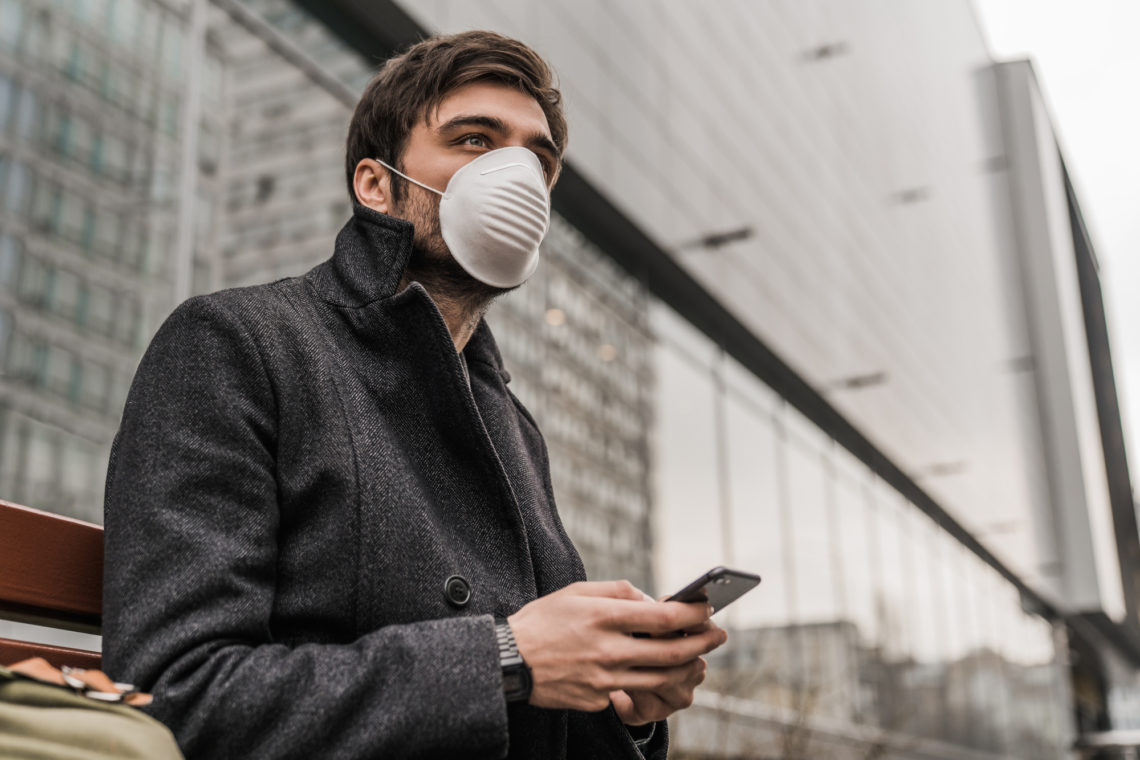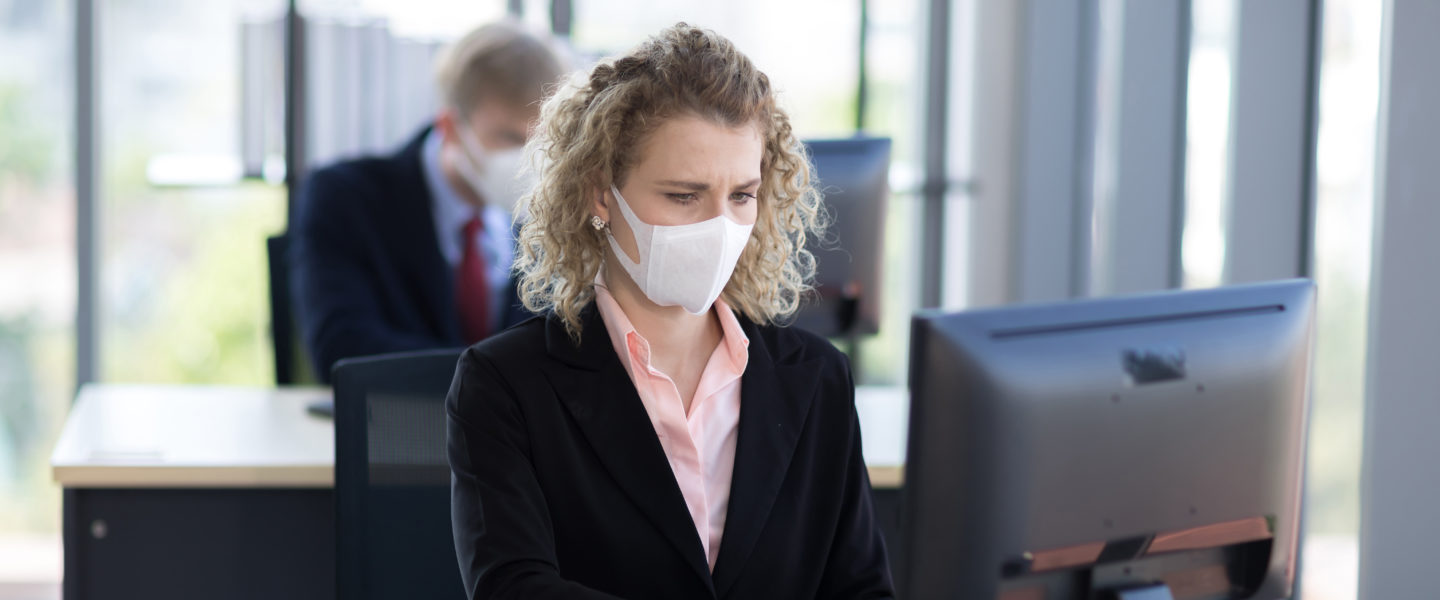Preparing for a post lockdown office building reoccupation requires careful planning and consideration. Whether you are the Head of Estates for a Museum, a Facilities Manager for a corporate office complex or a Property Director in the Education Sector, re-mobilising the corporate built environment after a prolonged period of shutdown and in the new world of social distancing and infection control will require significant attention and resources.
Facilities Managers ideally placed to manage building reoccupation
The Facilities Management practitioner is no stranger to mobilising and de-mobilising services; practical completions, building handovers, contractual transitions and office decants ensure that, as a profession, we have considerable experience and expertise. The skills of project management, internal communication, transition management, resource mapping, risk assessment and risk mitigation will all come to bear.
The challenge here is, not so much reopening the building doors, but changing the working habits and behaviours of a building population and how they will operate safely within the post-Covid landscape of infection control and social distancing. Over the last couple of weeks Neller Davies has worked closely with organisations across Business and Industry to overlay infection control measures which were previously the bastion of our FM Healthcare Sector. This expertise in enhanced or barrier cleaning, deep hygienic cleaning and infection control is now being applied to standard specifications within the office building in an attempt to prepare for safe reoccupation after lockdown. Here we present a plan for preparing your building for reoccupation post lockdown.
Planning for reoccupation
Plan now for building reoccupation, engage key stakeholders and use lockdown to consider how your organisation may work in the future. Over the last month, familiar ways of working have seismically shifted and planning for Business as Usual is suspended. Instead, we have to reimagine the workplace of the future and plan for agility in the short to medium term. Not only are there new safety and welfare considerations for how we operate safely in the built environment but also opportunities that many companies will want to harness such as remote working and the use of virtual communication platforms.
Strategy
Consider how your core business will change both during and post Covid-19 and, therefore, how it will function within your building in the post lockdown landscape. How will the social distancing requirements be met, how will you manage infection control and mitigate the risks around cross contamination? We are currently collaborating with a number of companies to reimagine, through structured workshops, how the post Covid workplace might look. Whilst taking valuable time to consider the future, certain practicalities need addressing to allow Facilities and Estates Teams to successfully re-open corporate offices post lockdown.

Core business considerations
As a starting point, Facilities Teams will need to work closely with Board colleagues to consider:
- How many people will be operating within the building?
- How will they operate (rotating teams / agile working / remote working / reduced or extended hours / rotating shifts)?
- What functions will they be undertaking when in the building?
- How is the core business planning to address social distancing and infection control and ensure the safety of the workplace?
Remember that the core operating functions supported pre-Covid may significantly change when you re-occupy. Understand the strategic shift that has and will occur within the core business in order to operate the built environment and support services to suit.
It is highly likely there will be a mismatch between how buildings are designed, how support services are structured and the way in which organisations will now operate. For many organisations the only certainty will be uncertainty and in this case the Facilities Management Team needs to structure its services for ongoing agility to achieve a new equilibrium and a service that continues to be fit for purpose.
Tactical
Having understood how the organisation is going to structure its business, next review the day to day mechanics of the building. The considerations will depend upon your building and the core function. Below is an abridged version of a checklist currently being deployed within our business. At the core of these considerations will be infection control and the health and safety of the building occupants in the context of evolving Government Advice. Thus, the Board’s strategic vision needs to consider the constraints of what is possible from an FM perspective:
Building reoccupation considerations
- Infection Control Policy and Procedure. Identify critical control points and use transferrable methodologies from H&S risk assessments and Hazards & Critical Control Point Procedures (HACCP). Eradicate, reduce and mitigate risk
- Social distancing, building densities and population spread
- Building directional flows – implement directional arrows
- Implement all available touch free / proximity based technology
- Test critical systems
- Stagger and rotate start times to reduce pinch point gatherings
- Implement space segregation and zoning to reduce cross contamination
- Control lift usage – ensure social distancing and reduce cross contamination risks
- Stagger and allocate lunch and other breaks
- Review social distancing in circulation areas, break out spaces and dining spaces – close or control
- Implement online ordering and desk delivery of food and beverages
- Reconfigure desks and space plan to meet distancing guidelines
- Stop workplace agile working and allocate desks and chairs
- Space plan to split teams and reduce inter and intra team cross contamination and build work team resilience
- Realign contracts to accommodate changing requirements
- New building opening hours. Either extend to accommodate social distancing constraints or reduce to accommodate remote working and reduce fixed costs
- Home / remote working policy and IT capacity
- Consider desk partitions and screening
- Virtual platform requirements both workplace and remote: Zoom, MS Teams, Webex etc.
- Meeting and conference room protocols. Time constraints, inter meeting deep cleaning protocols, stand up only, virtual only, establish new maximum attendance limits by space and team
- Restrict and control access to enclosed spaces (e.g. changing rooms and toilets) consider virtual queuing technology
- On site catering and hospitality policy and protocols. Social distancing, staggered seatings, desk delivery, safe kitchen operations, cashless payment, removal of self-service options, streamline menu options
- Reduce deliveries. Consider virus lifespan on various surfaces and adapt procedures
- Break out space and hubs. Redefine policy and protocols: control cross contamination risks and gatherings or consider full closure or serviced hubs
- Public / visitor / contractor access. Consider new protocols and shielding front line staff through revised procedures and or physical barriers (receptionists, mail room, delivery bay, security)
- Hygiene, PPE and enhanced cleaning policy and protocols both routine and as a result of a confirmed Covid-19 case

Develop your building reoccupation project plan
Working through a list such as the one above will help to create your tactical approach to safe building occupation. Develop a gap analysis; pre-Covid to post-Covid operations. This analysis will determine your project plan for building re-occupation and inform your new building user guidelines. At this stage, if not before, harness ideas and collaborate with a corporate wide stakeholder group. Along with the extensive benefits this brings, it will also place “subject matter experts” throughout the business. Upon reoccupation they will act as a second tier of influencers within the building who can support the new ways of working to become embedded.
Operational
From the tactical considerations of building operation, develop a procedural portfolio to provide direction and guidance to operational FM staff and detailed building guidelines for building users. Communicate this operational guide prior to re-occupation so that new ways of working are embedded from day one and more easily adopted.
Failure to communicate these during lockdown may result in your building occupants reverting to custom and practice on their return. Any change thereafter will be more challenging to achieve. If you have experience of mobilising new buildings draw on this as your reference. Hold workshops with representative key building users to tease out the type of queries they will have. This will guide you as to the range and depth of information you will need to provide.
The lockdown period provides us with substantial opportunity to engage with stakeholders so that questions can be teased out and answers provided ensuring the new ways of working are understood prior to doors opening. Ensure new office protocols are “soft”. Undoubtedly, there will be regular adaptations as everyone settles in to the new normal when the protocols can be honed and finalised. Giving your building occupants a sense that they can influence how they operate safely within the building will only support the massive behavioural shift that you need to achieve.
Timeline to building reoccupation
Much of the preparation for post lockdown building reoccupation can and should occur whilst still in lockdown. It is critical that the timeline from notification of lockdown lifting to re-occupation is mapped out. Ensure that Board members understand the need for operational FM staff to be in situ and prepared for the building re-occupation. Prior to opening the doors, ensure the new ways of working have been effectively communicated to the workforce.
All businesses want to resume “normal” operations as soon as possible. Therefore, this timeline from lockdown lifting to doors opening should follow the critical path as far as possible whilst remaining safe and practical. If you have followed the lockdown planning phase and your building has been maintained throughout, then you can be open within hours of lockdown lifting. Services, however, which depend on short shelf-life stocks, may take longer to achieve optimum service.
Communication
Ensure that the new building guidelines are effectively communicated to all building users prior to building reoccupation. Hold a virtual Q and A session on MS Teams, Zoom or similar – issue FAQs from queries posted. Ensure that the new ways of working are as clear as possible prior to reoccupation. Use both direct and indirect forms of communication. Within the building, deploy striking visual prompts to engender the immediate adoption of new working practices and to interrupt old habits e.g. posters, no entry signs, floor markings, directional arrows etc.. Identify key messages and develop an ongoing communication plan whilst new workplace guidelines are reinforced, habitualised and the new ways of working become embedded in the corporate culture.

Ensure that FM staff are posted throughout the building to direct, guide, support and embed the new working practices whilst people get used to them. If you don’t operate a floorwalker policy, consider assigning FM staff to floors to meet and greet on the first couple of days and to act as local subject matter experts. If you can safely and / or virtually undertake new building inductions prior to reoccupation then this too may underpin successful adoption of the new building guidelines.
Workstream Mobilisation
With a clear vision and plan for how your building will operate and the necessary changes to instil in your building occupants you are now positioned to mobilise your FM teams: FM, M&E, Space, Security, Cleaning, Catering, Reception, Mail Room. Some colleagues, no doubt, will have been furloughed, others will have worked throughout. Where possible, map into your plan 24 hours for a soft reoccupation so that FM teams can undertake critical testing, familiarise themselves with their new roles and re-structure the office to support the new ways of working.
Plan for Agility & Harness Learnt Lessons

Plan for the future and plan for a period of uncertainty! With discussions around a second wave of outbreaks, the nebulous timeline around deploying a successful vaccine and experiences from AsiaPac, all organisations need to plan for repeated lock downs and new infection control directives from the Government. FM teams, their supply chains and supply partners need to remain agile to meet the ever-changing new landscape.
Speak to an FM Consultant about social distancing and infection control in your workplace.

